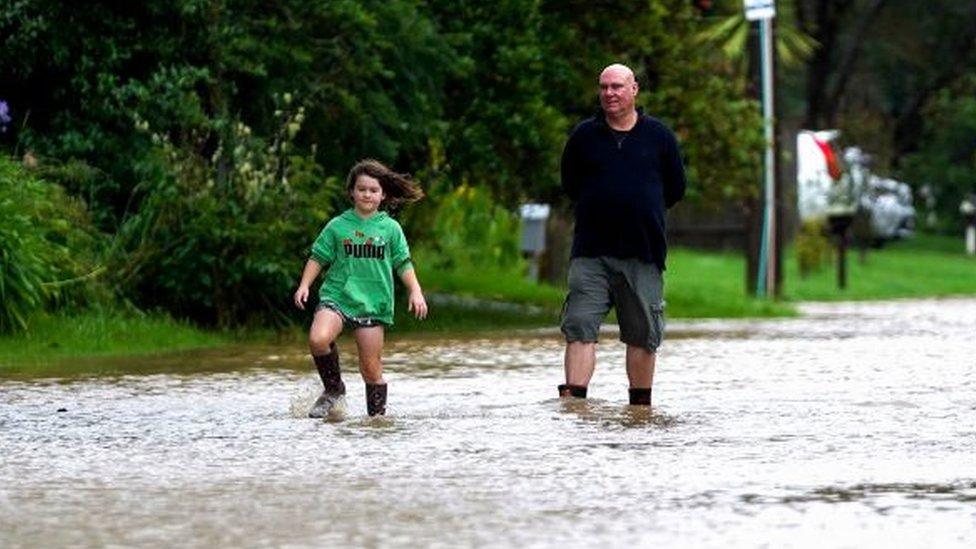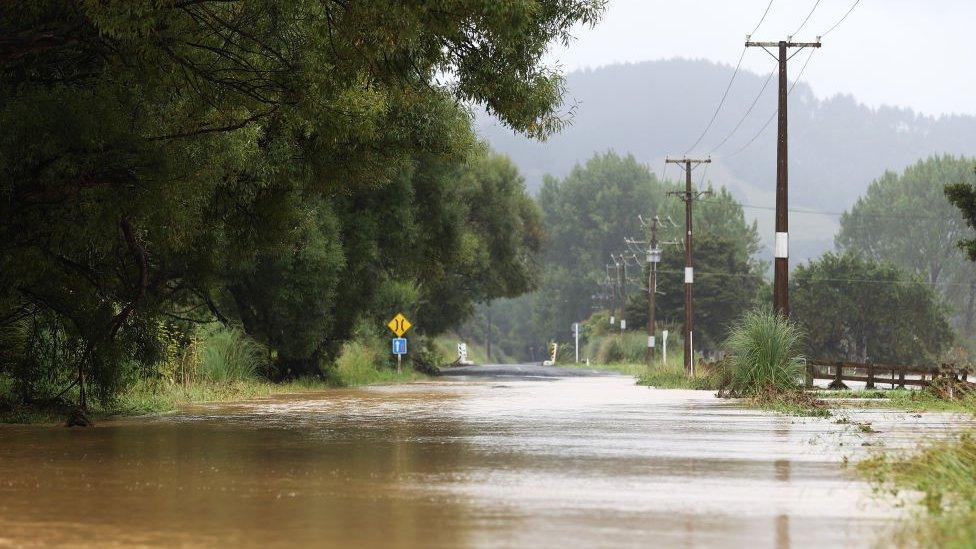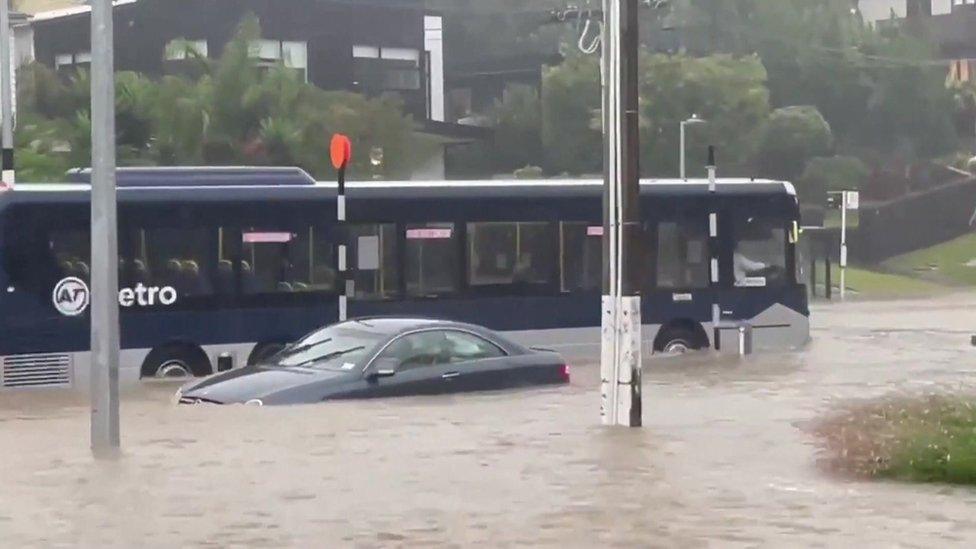New Zealand braces for severe storm Gabrielle after record floods
- Published

A man stacks up sandbags to protect a warehouse before the arrival of Cyclone Gabrielle in Auckland, New Zealand
Thousands of people in New Zealand have been left without power as parts of the country endure the start of a severe storm.
Gabrielle buffeted Australia's Norfolk Island overnight and has begun to lash the northernmost region of New Zealand.
Forecasters have issued "red" heavy wind and rain warnings for Auckland and Northland with 200mm of rain and winds of up to 130kph (80mph) expected.
Evacuation centres have been set up and residents have been preparing.
They have been told to ensure they have enough supplies to last three days in case they are trapped at home.
The storm - which has been downgraded from a cyclone - comes weeks after torrential rain inundated the city of Auckland., which remains under a state of emergency.
Tens of thousands of sandbags have been distributed there due to concerns the sodden ground and weakened infrastructure have made homes more vulnerable to flooding.

Parts of New Zealand's North Island are still recovering from recent record flooding
Air New Zealand, the national carrier, has cancelled several domestic flights ahead of the storm's arrival.
On Norfolk Island, which covers just over 34 sq km (13 sq miles) in the Pacific Ocean between New Caledonia and New Zealand, authorities said they were clearing debris and trees from roads and restoring power knocked out in the storm.
"There is still considerable clean up to be undertaken and it may take a while for services such as power to be restored," Emergency Management Norfolk Island said.
New Zealand's MetService has warned winds could still be strong enough to damage trees and power lines and that enough rain could fall to cause further flooding and landslides in the coming days.
Prime Minister Chris Hipkins said: "Our main message to people across the country is to please take the severe weather warning seriously and to make sure you're prepared.
"Make sure you've got your grab-and-go kits, make sure you know where you need to go in the event you need to evacuate your homes."
Allow X content?
This article contains content provided by X. We ask for your permission before anything is loaded, as they may be using cookies and other technologies. You may want to read X’s cookie policy, external and privacy policy, external before accepting. To view this content choose ‘accept and continue’.
The Coromandel Peninsula and the Tairāwhiti/Gisborne region, which were also affected by the recent torrential rain, have been placed under the most serious weather alert.
Residents in flood-prone areas have been told to prepare to evacuate.
"There's a degree of nervousness and anxiety around this coming event," the Thames-Coromandel district's mayor, Len Salt, told the Stuff news website.
"Coromandel people are pretty resilient, but the fact we've been in this mode dealing with storm events from the beginning of January...people are tired."
New Zealand braces for Cyclone Gabrielle
Related topics
- Published31 January 2023

- Published31 January 2023

- Published29 January 2023
